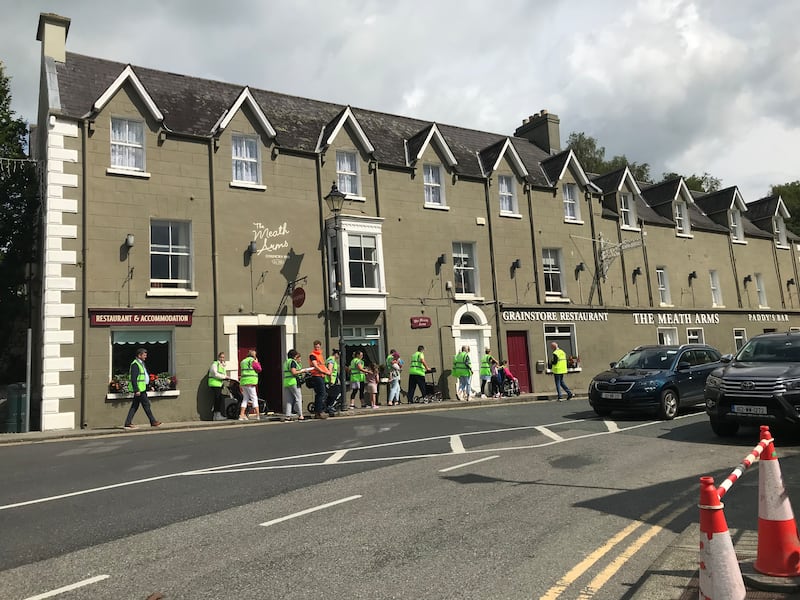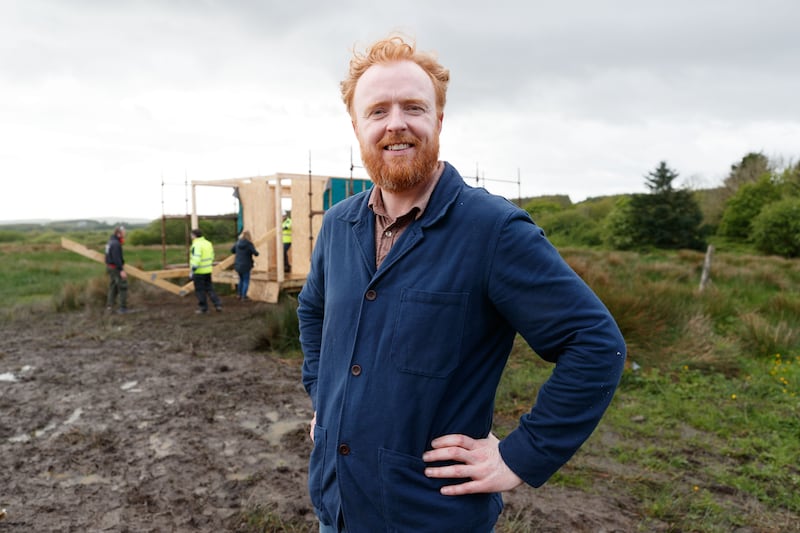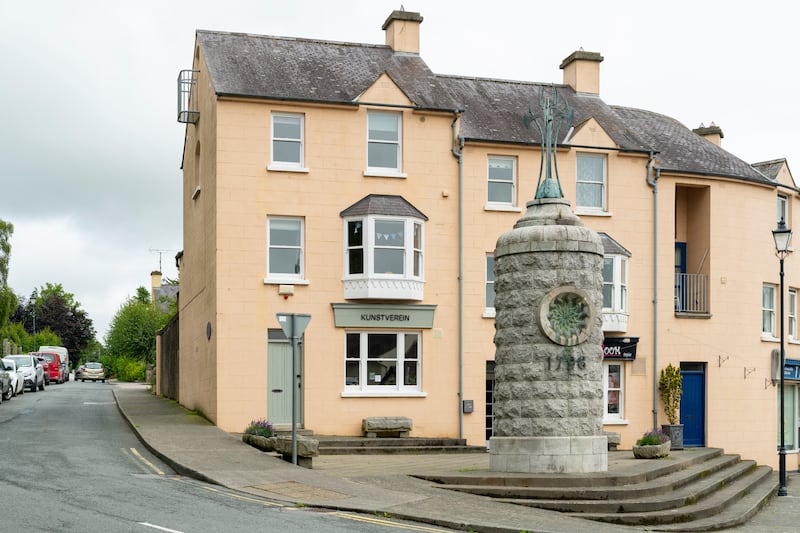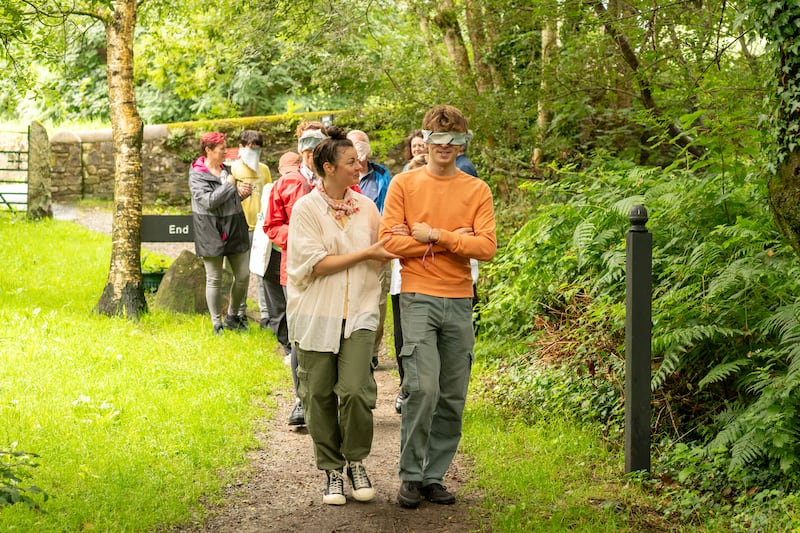Some social and environmental problems can seem so knotty, it can feel tempting to put the whole sorry mess in a box and park it on a very high shelf.
By unravelling the issues step by step, however, it can instead lead to changes for the better. Hometown Architect, set up by the Irish Architecture Foundation, is based on the simple, yet brilliant concept, of linking architects with community groups to tease out issues, and propose solutions, often based on resources right under our noses.
The five projects selected for 2023 include new ideas for a cluster of empty buildings in Tipperary town; a community vision for sustainably developing Belmullet in Co Mayo; a one-stop shop to address vacant properties in Tuam; tackling accessibility in Aughrim, Co Wicklow; and a whole new look at Lisdoonvarna in Co Clare. Each project received €10,000 to go towards exploring new ways forward, which, while it obviously won’t pay for any construction, can definitely assist in the process of asking the right questions.

“Nobody knows the answer,” says Shelley McNamara of Grafton Architects who partnered on the Lisdoonvarna project with Common Knowledge, ACT Studio Architects, and community groups including Lisdoonvarna Fáilte.
READ MORE
“But it is a very interesting time of change. Local groups have become much more active, and there is funding available from the State for public space projects, not necessarily for new buildings or new developments, but for public space, which is brilliant. We’re not ignoring problems that are there,” says the award-winning architect, who grew up in the area. “But we’re trying to see how we can re-present them in a way that offers a focus on the potential energy of a community and what a community can do for itself.”
As Fionn Kidney of Common Knowledge, the social enterprise he co-founded with Harrison Gardner says, Lisdoonvarna’s problems mirror those faced by so many rural Irish towns. A destructive, and divisive cocktail of depopulation through urbanisation; thoughtless Celtic Tiger development, misguidedly monetising everything within reach; and the pandemic’s devastation of tourism, followed by the sudden and urgent needs of refugees, has altered the make-up of towns and villages everywhere.
In the past, McNamara, who grew up in the area says, local transformation often came about when a big developer arrived with a great deal of money. Post Celtic Tiger, and post pandemic, that is far less likely, and generally less desirable. In terms of leisure, huge resort hotels with golf courses tend to offer a hermetically sealed world to their guests, so that benefits don’t necessarily integrate into the hinterlands.
Lisdoonvarna is dripping with potential that would have any imaginative developer positively drooling. One of Ireland’s original spa towns, it was once an epicentre of wellness tourism, its mineral waters taken by everyone and anyone, from farmers to fancy ladies. Hotels opened, all that wellness led to music and dancing, dancing led to meeting and marriages, and the town became known for both.
Today, the Matchmaking Festival is an echo of this heyday, but another remarkable resource remains. The original spas and 80 acres of land are owned by a community trust, and McNamara and her team created a map to open conversations about how the social heart of the town may be renewed. A series of public events, conceived of as Reimagine Cafes, were attended by people from across the community, and vitally included those living in the newer refugee communities.
“It has changed the dynamics of the town that was once very much a tourist town,” says Kidney. It also provides an opportunity to work with the energy of new communities to completely refresh future imaginations for the town.
[ Ukraine war: Lisdoonvarna plays its part helping the displacedOpens in new window ]
“We thought maybe 50 or 60 people might come,” says Kidney. “But we had at least 120. The first workshop was about naming the story, exploring key themes that could help us understand what people wanted, what they were concerned about for the future, and then asking them for ideas.” The next phase, he says, involves inviting everyone who participated back, “to look at those ideas visualised, hopefully provoking reflections and reactions, so we can see what everyone can agree on to work as a vision for the future.” This includes exploring the huge resource of the mineral wells and the heritage of their Victorian infrastructure, coupled with our contemporary surge of interest in wellness; and creating the resources to re-establish Lisdoonvarna as a genuinely attractive place to live and work.

A problem with community regeneration plans and schemes can be that the wheel gets reinvented over and over again, but Hometown Architect has been excellent at encouraging connections. In Lisdoonvarna, Cllr Joe Garrihy, who works with Lisdoonvarna Fáilte, brought his knowledge of strategic plans, including heritage, biodiversity and sustainable energy to the table. They were joined by architects and designers from ACT Studio to, as Kidney puts it, “think about a way we could do this that would be engaging, relatable, and would invite voices from every corner of the community, and to do it through the prism of wellness.”
McNamara talks of the positive energy to be found in Lisdoonvarna’s new communities, including the refugees making their home in the town and its hinterlands, and of returning residents, such as Conor Burke, who set up the Gentian Letterpress on the outskirts of town, after studying graphic design at NCAD. He has since established a huge and fascinating collection of vintage printing presses and typefaces, and proves there is no need to be in an urban centre to focus on your passion.
[ Ireland’s last surviving traditional matchmaker fears he may be the lastOpens in new window ]
“It’s a really optimistic sign,” says McNamara. “He makes these amazing things, and he’s making it work.
“That’s part of the philosophy of Common Knowledge as well,” she says. “Where there is challenge, there is opportunity. The cracks open up. A very hermetic, highly commercialised situation doesn’t allow space for artists or contemporary dancers, or people with a different idea about ways of living. This is broadening the spectrum.” As we all face the challenges of what the future is going to be, it makes sense to engage with as broad a spectrum as possible.

In picturesque Aughrim, Co Wicklow, Kate Strain teamed up with Aughrim Tidy Towns and the Aughrim Active Retirement Group. Their hometown architect is Jenny O’Leary of HOWFF Architects, who moved to the area from Dublin in 2019. The project also includes artists from the Forerunner group, Áine Mac Giolla Bhríde and Studio Roji designers. Together they set out to explore issues of accessibility in Aughrim, kicking off with a Walkability Survey, where they were joined by local residents including users of buggies, wheelchairs and other walking aids, to see just where problems arise in getting around town. Usefully, representatives from Wicklow County Council also took part, so that discoveries can feed into practical solutions. They were facilitated by a handy Walkability Audit Tool, created by the National Transport Authority, which can be downloaded at nationaltransport.ie.
Great things can come from seemingly small beginnings and this time, for once, the money is there to act on the findings
— Shelley McNamara of Grafton Architects
Like Cashel, which achieved Gold Star status for accessibility in a project that commenced in 2006, Aughrim has already been working to meet the needs of all its residents and visitors, with the National Disabled Angling Facility, including a four-acre lake, and an eight-acre riverside park. It is an ongoing project, however, as O’Leary notes, as standards and requirements evolve and change over time. But whatever those standards are, anyone who has ever pushed a buggy, or tackled a city, town or village in a wheelchair knows how difficult it can be. Pavements evaporate, street furniture clutters the pathway, and kerbs become surprisingly precipitous. “We need to rethink,” says O’Leary, describing the big overhaul that is needed. In the meantime, she says, “we’re also looking at the quick, remedial wins we could make”.
These include designing mini “drawbridges” to help navigate shops with doorsteps, starting with Strain’s own Kunstverein, based in the heart of Aughrim. For those not familiar with the lingo of European arts organisations, a Kunstverein is an arts organisation that is more focused on enabling artists to realise projects than it is with hosting a programme of exhibitions. Strain set up Ireland’s first Kunstverein in 2022, after returning from running something similar in Graz in Austria.
Strain’s involvement layers in an artistic element to the project that included a sensory walk. This took place during the summer, as participants explored the town wearing variously blindfolds and earplugs, sampling local foods and discovering more of Aughrim’s histories and stories, led by choreographer Aoife McAtamney with artist Jackson Byrne. Taking the arm of a stranger, to be led blindfold along a forest path, may seem disconnected from the travails of those with mobility issues, and yet the sense of vulnerability, and the heightened awareness of potential obstacles, was coupled with the warmth of trust, and the feeling of support that was available through that guiding arm was unexpectedly profound.

Hometown Architect is a multilayered and fascinating set of explorations, drawing together different ways of thinking, ideas and combining the power of shared imaginations. As Aughrim and Lisdoonvarna, Tipperary, Belmullet and Tuam demonstrate, all towns have their problems, but they also have their hidden gems, their untapped resources, their people and their stories.
Great things can come from seemingly small beginnings and this time, for once, as McNamara notes, the money is there to act on the findings. She adds that a new kind of architectural practice is emerging, embodied by organisations such as ACT, and in Aughrim, HOWFF: “They’re making things working with what’s around them, through collective endeavour, and through engagement with communities. It’s a fresh practice, dedicated to community engagement, making projects out of the wishes of the people, empowering local people, and looking beyond the normal options.” It shows, she says, that there is choice in what we do and how we do it. Suddenly the future is looking a little brighter. The potential is here.


















